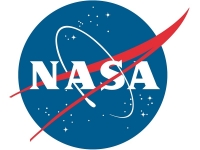Technology
MARS HELICOPTER To Fly On NASA s Next RED PLANET ROVER MISSION
MARS 2020 ROVER MISSION

(Source: NASA)
The Mars Helicopter, a Small, Autonomous Rotorcraft, will travel with the Agency's Mars 2020 Rover Mission, currently scheduled to launch in July 2020, to demonstrate the Viability and Potential of Heavier-Than-Air Vehicles on the Red Planet.
"NASA has a Proud History of Firsts," said NASA Administrator Jim Bridenstine. "The Idea of a Helicopter flying the Skies of Another Planet is thrilling. The Mars Helicopter holds much Promise for Our Future Science, Discovery, and Exploration Missions to Mars."
U.S. Rep. John Culberson of Texas echoed Bridenstine's Appreciation of the Impact of American Firsts on the Future of Exploration and Discovery.
"NASA has a Proud History of Firsts," said NASA Administrator Jim Bridenstine. "The Idea of a Helicopter flying the Skies of Another Planet is thrilling. The Mars Helicopter holds much Promise for Our Future Science, Discovery, and Exploration Missions to Mars."
U.S. Rep. John Culberson of Texas echoed Bridenstine's Appreciation of the Impact of American Firsts on the Future of Exploration and Discovery.
Started in August 2013 as a Technology Development Project at NASA's Jet Propulsion Laboratory (JPL), the Mars Helicopter had to prove that Big Things could come in Small Packages. The Result of the Team's Four Years of Design, Testing and Redesign weighs in at little under four Pounds (1.8 kilograms). Its Fuselage is about the Size of a Softball, and its Twin, Counter-Rotating Blades will bite into the Thin Martian Atmosphere at almost 3,000 rpm (about 10 Times the Rate of a Helicopter on Earth).
The Helicopter also contains Built-In Capabilities needed for Operation at Mars, including Solar Cells to charge its Lithium-Ion Batteries, and a Heating Mechanism to keep it Warm through the Cold Martian Nights. But before the Helicopter can fly at Mars it has to get there. It will do so attached to the Belly Pan of the Mars 2020 Rover.
The Helicopter also contains Built-In Capabilities needed for Operation at Mars, including Solar Cells to charge its Lithium-Ion Batteries, and a Heating Mechanism to keep it Warm through the Cold Martian Nights. But before the Helicopter can fly at Mars it has to get there. It will do so attached to the Belly Pan of the Mars 2020 Rover.
Once the Rover is on the Planet's Surface, a Suitable Location will be found to deploy the Helicopter down from the Vehicle and Place it onto the Ground. The Rover then will be driven away from the Helicopter to a Safe Distance from which it will relay Commands. After its Batteries are charged and a Myriad of Tests are performed, Controllers on Earth will command the Mars Helicopter to take its First Autonomous Flight into History.
The Full 30-Day Flight Test Campaign will include up to Five Flights of incrementally farther Flight Distances, up to a Few Hundred Meters, and Longer Durations as long as 90 Seconds, over a Period. On its First Flight, the Helicopter will make a Short Vertical climb to 10 feet (3 meters), where it will hover for about 30 Seconds.
The Full 30-Day Flight Test Campaign will include up to Five Flights of incrementally farther Flight Distances, up to a Few Hundred Meters, and Longer Durations as long as 90 Seconds, over a Period. On its First Flight, the Helicopter will make a Short Vertical climb to 10 feet (3 meters), where it will hover for about 30 Seconds.
As a Technology Demonstration, the Mars Helicopter is considered a High-Risk, High-Reward Project. If it does not work, the Mars 2020 Mission will not be impacted. If it does work, Helicopters may have a Real Future as Low-Flying Scouts and Aerial Vehicles to access Locations not reachable by Ground Travel.
Mars 2020 will launch on a United Launch Alliance (ULA) Atlas V Rocket from Space Launch Complex 41 at Cape Canaveral Air Force Station in Florida, and is expected to reach Mars in February 2021.
The Rover will conduct Geological Assessments of its Landing Site on Mars, determine the habitability of the Environment, search for Signs of Ancient Martian Life, and assess Natural Resources and Hazards for Future Human Explorers. Scientists will use the Instruments aboard the Rover to identify and collect Samples of Rock and Soil, encase them in Sealed Tubes, and leave them on the Planet's Surface for Potential Return to Earth on a Future Mars Mission.
Mars 2020 will launch on a United Launch Alliance (ULA) Atlas V Rocket from Space Launch Complex 41 at Cape Canaveral Air Force Station in Florida, and is expected to reach Mars in February 2021.
The Rover will conduct Geological Assessments of its Landing Site on Mars, determine the habitability of the Environment, search for Signs of Ancient Martian Life, and assess Natural Resources and Hazards for Future Human Explorers. Scientists will use the Instruments aboard the Rover to identify and collect Samples of Rock and Soil, encase them in Sealed Tubes, and leave them on the Planet's Surface for Potential Return to Earth on a Future Mars Mission.
The Mars 2020 Project at JPL in Pasadena, California, manages Rover Development for the Science Mission Directorate at NASA Headquarters in Washington. NASA's Launch Services Program, based at the Agency's Kennedy Space Center in Florida, is responsible for Launch Management.
Source : NASA
Ruby BIRD
http://www.portfolio.uspa24.com/
Yasmina BEDDOU
http://www.yasmina-beddou.uspa24.com/
Source : NASA
Ruby BIRD
http://www.portfolio.uspa24.com/
Yasmina BEDDOU
http://www.yasmina-beddou.uspa24.com/
Ruby Bird Yasmina Beddou Nasa Mars Helicopter Red Planet Rover Mission Mars 2020 Red Planet Exploration Science Discovery John Culberson Nasa Administrator Jim Bridenstine
Liability for this article lies with the author, who also holds the copyright. Editorial content from USPA may be quoted on other websites as long as the quote comprises no more than 5% of the entire text, is marked as such and the source is named (via hyperlink).






